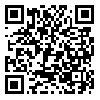BibTeX | RIS | EndNote | Medlars | ProCite | Reference Manager | RefWorks
Send citation to:
URL: http://journal.muq.ac.ir/article-1-213-en.html
2- Urmia University
Background and Objectives: Titanium dioxide (TiO2) is a nanoparticle, which is widely used in various fields as a healthcare composition to control microorganisms. The small size of this nanoparticle and its chemical composition and high reactivity, have potential risks for human health and the environment. Due to the abundant use of this nanoparticle over the recent centuries, the effect of the material on mouse intestine, was studied in this study. Methods: In this research, 12 male mice were randomly divided into 3 groups of 4 each. The first group as the control-sham, received HPMC at a dose of 1 mL; the second group received 1ml TiO2 and 10mg/kg HPMC; and the third group received 1ml TiO2 and 100ml/kg HPMC, intraperitoneally. After 35 days of treatment, the mice were weighed, and after anesthesia, their intestines were removed and studied by light microscopy after H&E staining. Data were analyzed by one-way ANOVA and Tukey test at the probability of p<0.05. Results: In this study, weight loss of mice, destruction of the epithelium of the duodenum, increased vacuolar cells, destruction of glycocalyx at the apical zone of the epithelium, and enlargement of ileum lymph nodes, were observed in mice treated with TiO2. Conclusion: According to the results of this study, TiO2 caused reduction in glycocalyx, increase in vacuolar cells, and destruction of intestinal villi.
Received: 2016/02/13 | Accepted: 2016/02/23 | Published: 2016/02/23
| Rights and permissions | |
 |
This work is licensed under a Creative Commons Attribution-NonCommercial 4.0 International License. |







